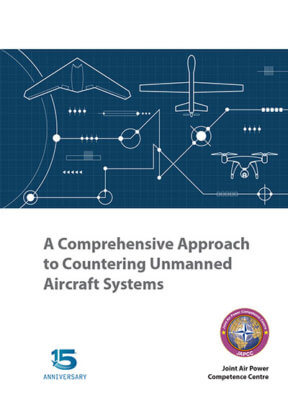Dear Reader,
Unmanned Aircraft Systems (UAS) have become an integral part of NATO operations and have advanced into an invaluable asset for Intelligence, Surveillance, and Reconnaissance, as well as for combat missions.
This has not gone unnoticed by both state and non-state actors, which has led to an enormous effort by these players to catch up with or at least mimic the Western level of technology. Over the last decade, China, Russia, and to a certain extent Iran, have considerably advanced the development of UAS, and their latest models seem to have the same performance characteristics as Western models. Russian and Chinese inventories comprise the full range from small and tactical UAS, through Medium- and High-Altitude Long-Endurance (MALE/HALE) systems, to replicas of US and European stealth prototypes.
At the same time, the consumer drone market is one of the world’s fastest-growing businesses, making drone technology literally available for everyone. The market for commercial drones with a significantly higher performance than consumer models is also steadily growing. Due to their increased proliferation, the number of incidents with drones in the vicinity of airports, public events and military installations has raised the attention and concern of the respective civil authorities responsible for public safety and law enforcement.
Countering UAS and drones is a challenging task, both in the military and civil domain. Therefore, it is important to incorporate all available means and to exploit any vulnerabilities to achieve this task. However, most UAS and drone defence applications are focused solely on the Unmanned Aircraft (UA) itself, rather than exploiting the weaknesses of the entire system, which typically also comprise mobile or stationary remote control equipment, radio communication links, and human personnel.
It is also important to note that countering UAS and drones is already a task in peacetime whereas most military defence applications are intrinsically designed for a conflict scenario. Not to mention that the legal frameworks for operating in peace, crisis, or conflict differ significantly. Hence, adopting civil approaches to this challenge and incorporating the civil authorities is required when the employment of military force is restricted or prohibited.
To stimulate thought on a more comprehensive approach when having to counter UAS and drones, this book provides the reader with a broad assortment of the different military, civil, and legal perspectives on the subject matter.
I invite you and your staff to read through this book and to critically assess the conclusions and recommendations presented. We welcome any observations you may have with regard to this book or future issues it identifies. Please feel free to contact my JAPCC staff for any inquiries and comments.
Klaus Habersetzer
Lieutenant General, GE AF
Executive Director, JAPCC












